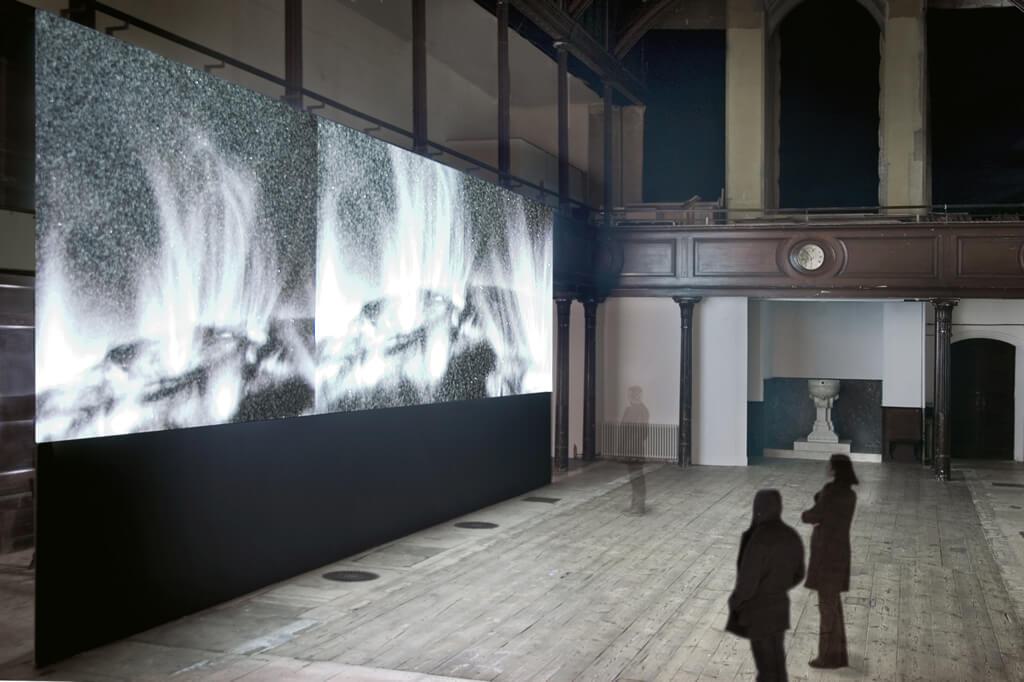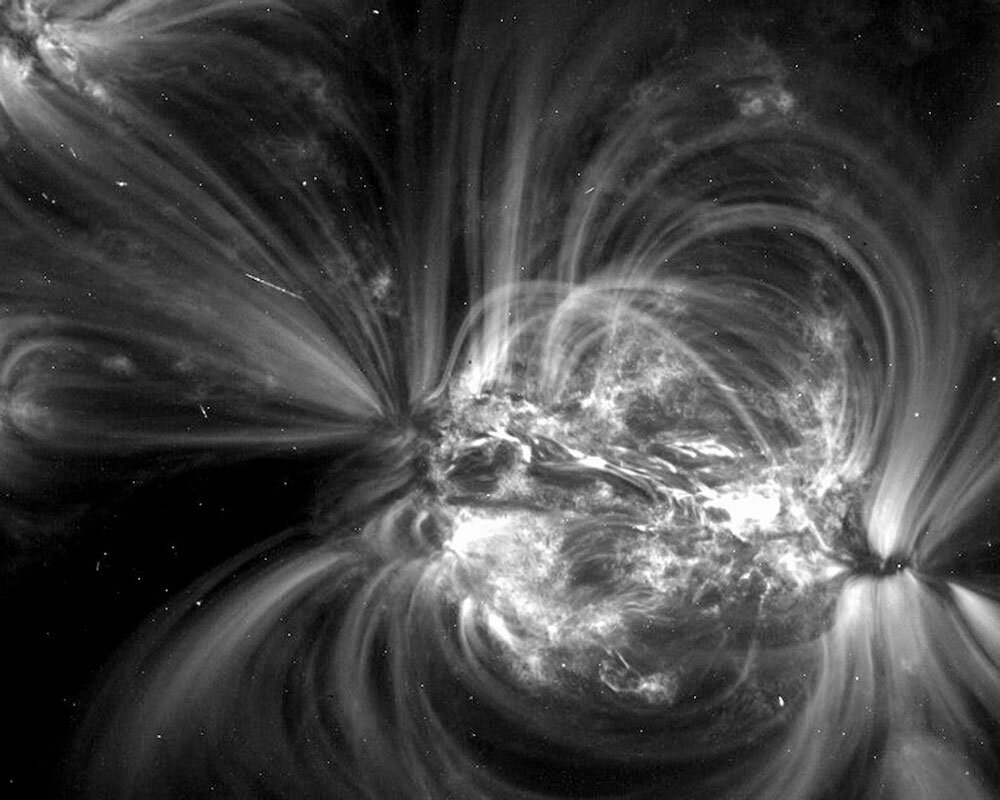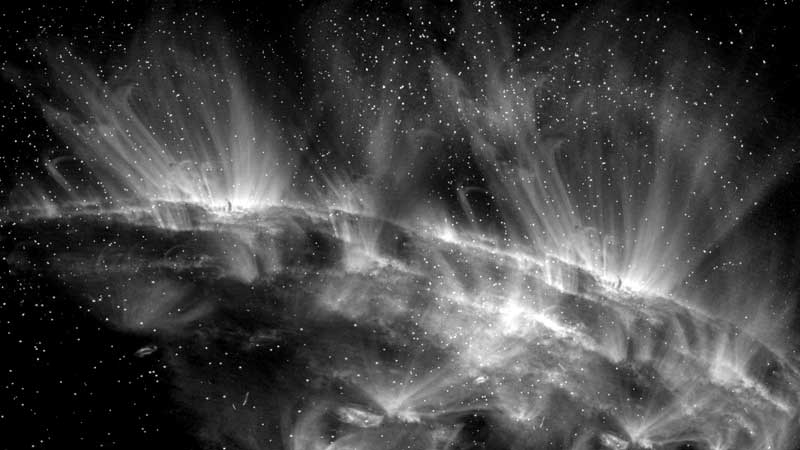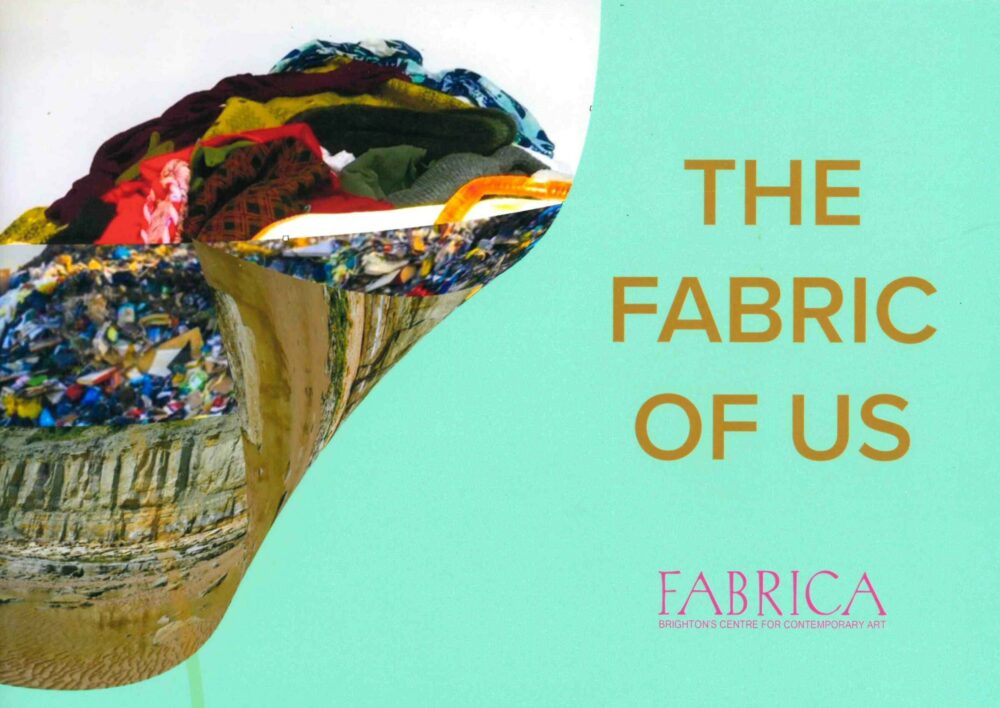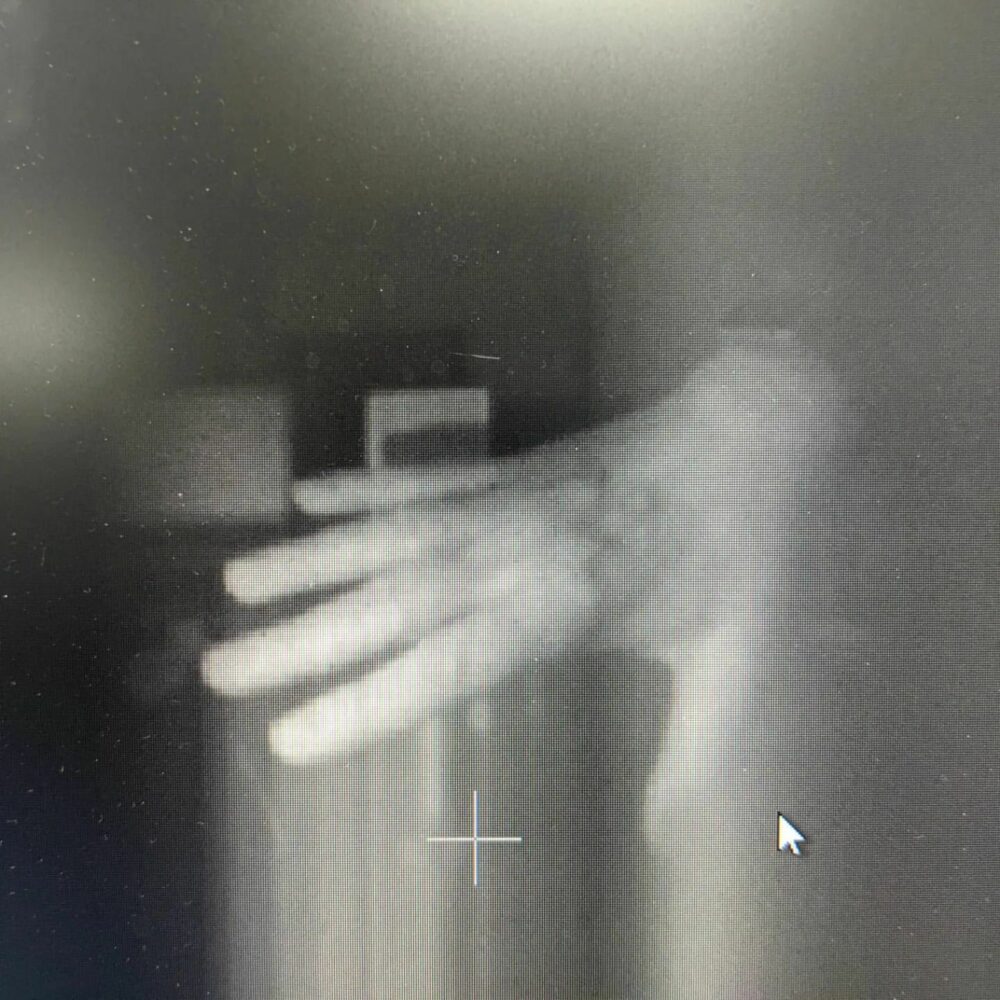Brilliant Noise
Semiconductor
Semiconductor released a DVD catalogue, Worlds in Flux, to accompany the exhibition. Released by Fat Cat Records, it features work from the past five years before the exhibition and features specially commissioned re-mixed and alternative soundtracks for Brilliant Noise.
Brilliant Noise
Brilliant Noise, a 10 minute film composed of thousands of NASA still solar images that Semiconductor turned into time lapse sequences, was developed for Fabrica as an 11 metre wide, surround-sound installation. After sifting through hundreds of thousands of computer files, made accessible via open access archives, Semiconductor were able to bring together some of the sun’s finest unseen moments. These grainy black and white pictures are usually cleaned up by NASA, hiding the processes and mechanics in action behind the capturing procedure. However, for Brilliant Noise, the selected images kept in their most raw form, revealing the energetic particles and solar wind as a rain of white noise. Most of the imagery was collected as single snapshots containing additional information, by satellites orbiting the Earth. These images were then reorganised into their spectral groups to create time-lapse sequences. The soundtrack highlighted the hidden forces at play upon the solar surface, by directly translating areas of intensity within the image brightness into layers of audio manipulation and radio frequencies.
Magnetic Movie & Do You Think Science…
Magnetic Movie and Do You Think Science… are short films which were inspired by interviews Semiconductor arranged with the scientists they met at the Space Sciences Lab. For this exhibition, the films were shown on large wall-mounted widescreen LCD screens situated in viewing rooms behind the large screen.
Magnetic Movie
Semiconductor articulated their response to these interviews by visually representing magnetic fields within the setting of the space sciences lab to create a 5 minute film entitled Magnetic Movie, whose soundtrack combined the scientists’ verbal descriptions of these invisible force fields, with crackling audio recordings of electromagnetic signals from the earth’s ionosphere. Magnetic Move was an Animate Projects commissioned for Channel 4 in association with the Arts Council England.
Do You Think Science…
Do You Think Science… was a 12 minute ‘talking heads’ film where the scientists struggle to answer an unfathomable question, revealing the hidden motivations driving them to the outer limits of human knowledge. The full question (Do you think science can tell us everything?) is not revealed until well into the film. In an attempt to find meaning within the question, they open a Pandora’s Box of limitations within science itself, revealing their own philosophical confines. Issues of faith, medicine and the laws of matter are raised to illustrate the infinitely complex universe we live in.
About The Artist
Semiconductor is UK artist duo Ruth Jarman and Joe Gerhardt. Over the past twenty years of collaboration they have become known for a unique and innovative body of visually and intellectually engaging artworks, which explore the material nature of our world and how we experience it through the lenses of science and technology.
They blend experimental moving image techniques, scientific research and digital technologies creating works which examine the way science can extend the limits of human perception while reflecting upon how we experience the world. They have undertaken fellowship opportunities and residencies at a number of prestigious scientific institutions including CERN, Geneva, Switzerland; Mineral Sciences Lab at The Smithsonian National Museum of Natural History, Washington DC, USA; Gulbenkian Galapagos Artists Residency; The NASA Space Sciences Laboratories UC Berkeley, California.
